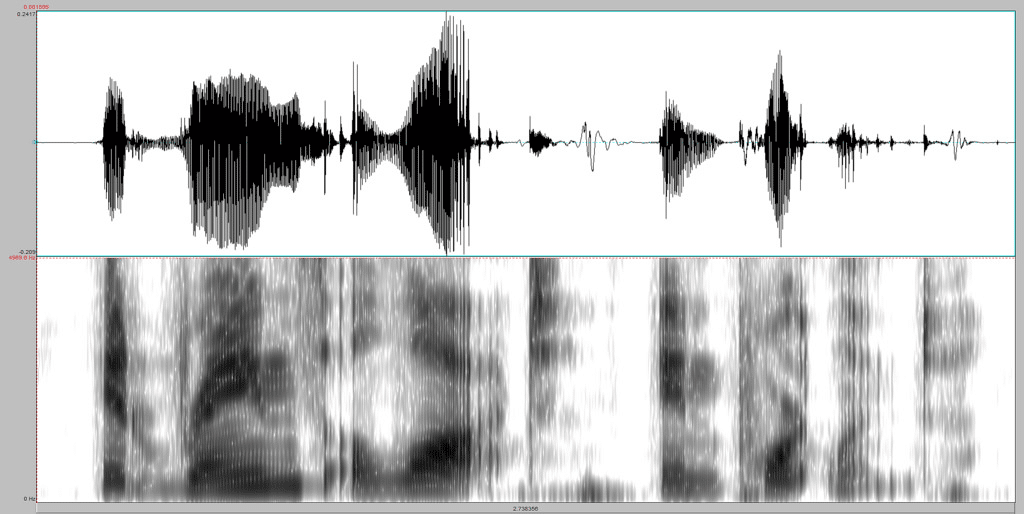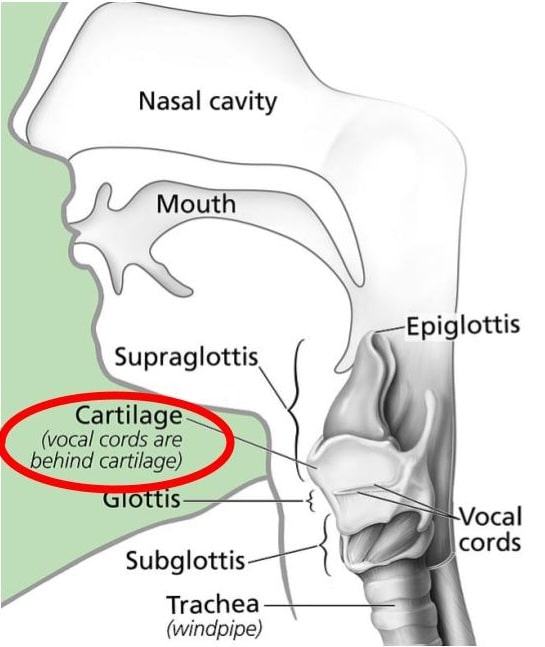1.5 – Pronunciation – Voiced and Voiceless Consonants
In this lesson we’re going to be talking about something a little pedantic, but it may help you in understanding why some of the words you’ve been hearing pronounced are pronounced the way they are. Let’s start with a couple examples:
|
led – ‘ice’ |
muž – ‘man’ |
First, let’s take a look at the following chart in Czech:
|
voiced |
voiceless |
|
b |
p |
|
v |
f |
|
d |
t |
|
z |
s |
|
ď |
ť |
|
ž |
š |
|
g |
k |
|
h |
ch |
|
Consonants on the left are voiced and consonants on the right are voiceless. What does this mean? The easiest way to hear (and feel) the difference is by putting your fingers on your neck where your vocal cords are (see image on right).
When you pronounced a voice consonant, you will feel your vocal cords vibrate; when you pronounce voiceless one, they will not. It is easiest to hear and feel the difference when you contrast s with z; or f with v. |
|
1. End of the word – voiced consonants are pronounced as their voiceless counterpart at the end of a word (listen to examples led and muž above), e.g. –
led → [let] bav → [baf]
hrob → [hrop] hrad → [hrat]
batoh → [batoch] muž → [muš]
Your strategy for figuring out how to pronounce the final letter of a word should be as follows: a) figure out whether the last consonant is one of the voiced or voiceless consonants in the chart above; b) if it is voiceless, pronounce it exactly as it is written; c) if it is voiced, pronounce it as if it were written with the corresponding voiceless consonant from the chart above.
2. Consonant Clusters – Pronunciation of consonant clusters is also determined by voicing rules. Listen to the following:
|
četba – ‘reading’ |
vtip – ‘joke’ |
In each of the examples above, one of the consonants in a cluster was not pronounced exactly as it is written. Instead, it was pronounced like its corresponding voiced or voiceless partner to match the final consonant in a cluster.
Your strategy should be as follows:
- identify the consonant cluster
- figure out whether the consonants in the cluster are voiced or voiceless
- if some are voiced and others are voiceless, then the final consonant of the cluster determines how the others are to be pronounced:
- if the final consonant is voiced, all preceding consonants will be pronounced like their voiced counterpart;
- if the final consonant is voiceless, all preceding consonants will be pronounced as their voiceless counterpart.
According to this rule, the following words will be pronounced as in brackets:
obsahat → [opsahat] všední → [fšední]
přiložte → [přilošte] četba → [čedba]
nadávka → [nadáfka] sdělit → [zdělit]
Above all, the table above is your best tool for figuring these out.
Attributions
Images used in this document come from these sources.
Audio licensed CC-BY-SA from https://forvo.com/





